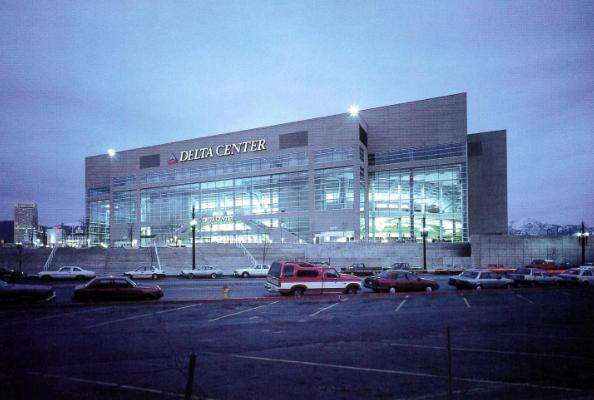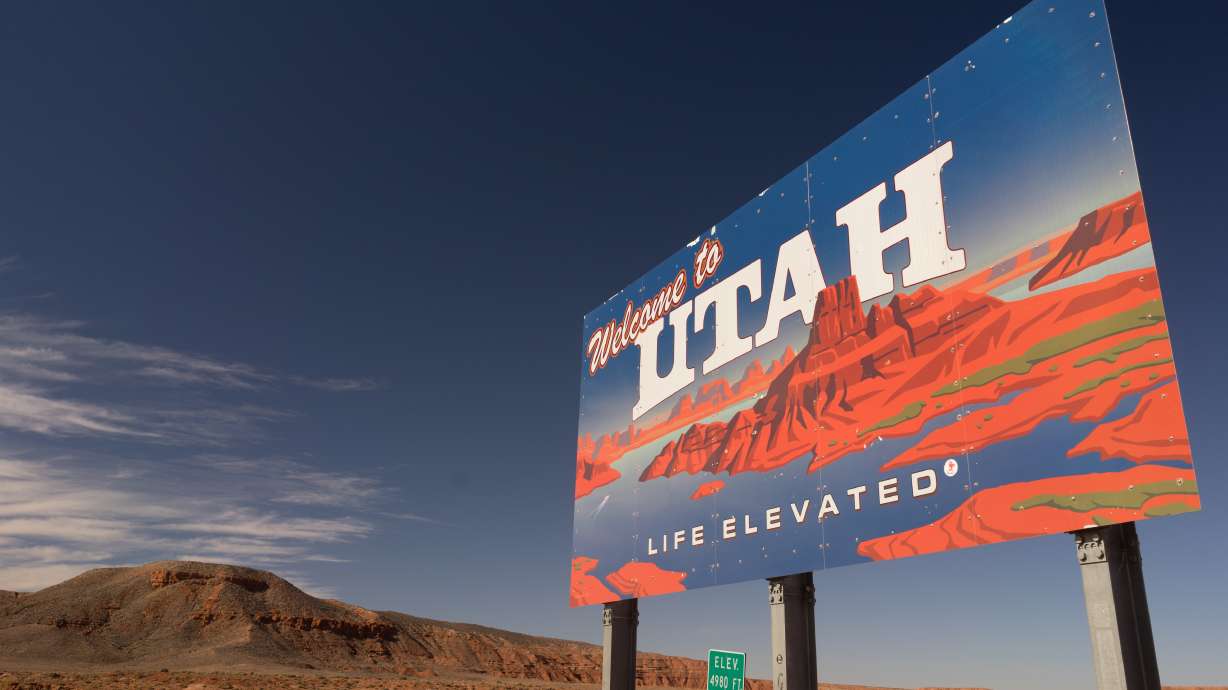SALT LAKE CITY — You could tell your grandkids about the hardships you endured walking to school uphill in the snow. To be honest, it's probably true if you grew up in Utah. But there are many more interesting stories about how Utah has changed over the years. How many have you been around for?
All dirt roads lead to the Delta Center

Utah's capital city has seen a lot of growth since Brigham Young built his eagle-gated, lion-guarded property. Not that road congestion is anything new. Way back in 1912, frustrated Salt Lake traffic officer Lester Wire invented the traffic light to deal with it. He installed his prototype at the intersection of Main and 200 South.
Perhaps Wire was anticipating the revamped Delta Center. When it becomes a dual-sport venue, it could be a lot trickier getting around downtown Salt Lake City. Word to the wise — and we think officer Wire would agree — if you're going to a game, it's probably best to take TRAX.
Where did you go, small town St. George?

Snowbirds have always known the perks of going to St. George in the winter. But they couldn't keep it to themselves. Thousands of families found their way, too, making annual spring break pilgrimages.
Then, people began to stick around year-round, despite the sweltering summer heat. Between 1950 and 2000, the population grew from 4,500 to over 50,000. Now, St. George is considered the fifth-largest city in Utah, with more than 113,000 residents.
First clean pool in the West

Today, Lagoon Amusement Park is known for its thrill rides and a really old roller coaster — 103 years and counting! But before it became all that, it was the first spot west of the Mississippi to have a filtered-water swimming pool.
According to the park's website, Lagoon installed a million-gallon pool in 1927, touting it as a place to swim in "water fit to drink." Speaking of water, remember when you could get a face full of it on the Log Flume?
Tourists, tourists, tourists

We know it's hard to believe, kids, but back in the day, you could actually drive into all of Utah's national parks whenever you wanted. And you could hike the most popular hikes at will. No, really! Nope, no special passes or reservations were needed. Sometimes you could even find a parking spot. Ah, those were the days.
Why the changes? Case in point: In 1980, Zion National Park had 1.1 million visitors. Today, it sees over 5 million annually.
The incredible shrinking lake
Once upon a time in Utah history, there was a vast desert in the south. Then, in 1963, the Glen Canyon Dam changed the flow of the Colorado River and Lake Powell was born. Over the course of 17 years, it filled to full capacity, and recreationists began filling it with watercraft.

The lake rose to its highest level in 1983, covering 25,757 acre-feet. Droughts have since lowered the water significantly, dropping it to just 22.8% of its capacity in 2022. As of spring 2025, it was back up to 32%.
From trolleys to TRAX

When Salt Lake City was first organized, the streets were made wide enough for a team of horses to turn around. It was smart planning because that left plenty of room for a trolley track that would become our first mass transit service. Utah's past and present photos show where cable lines once ran through the city.
The trolleys were replaced by buses in the 1940s — although the main depot, Trolley Square, lives on. Utah reintroduced a rail service in December 1999, when it opened TRAX. If you want to go to the far reaches of the valley, you can now hop on FrontRunner.
Where have all the dry dance clubs gone?

Utah was once home to the longest-running "no alcohol" discotheque in the nation. Can you guess where? the Star Palace, later just the Palace, opened in 1978 in Provo, catering to Brigham Young University students.
Later, it introduced theme nights: high school, big band, country and Latin. It closed in 1995 when its home, the leased Provo National Guard building, was sold.
A similar club, the Bay, opened in 1979 for teetotalers in Salt Lake City. It moved a couple of times, closed and reopened, but it ultimately closed for good in 2001.
Reaching new heights
Believe it or not, the Salt Lake Temple once dominated the skyline in downtown Salt Lake City. Surprisingly, it's now hard to spot when you're zipping past on I-15.

In 1908, the Boston Building became the city's first skyscraper, but lost its status as the tallest just one year later when the Newhouse Building was finished. The latest title holder is the Astra Building at 451 feet. It surpassed the longstanding champ, Wells Fargo Center, by 29 feet.
Though not a building, the 450-foot-tall Murray smokestacks were once a conspicuous landmark. Utah before-and-after photos show a clearer sightline after they were demolished in 2000.
Back in my day …

What other places or things in Utah have changed in your lifetime? What do you miss? Maybe you celebrated a birthday at the 49th Street Galleria in Murray. Or you worked at the Clover Club potato chip factory in Kaysville.
Share some favorite memories and the changes you've seen in the comments below.









